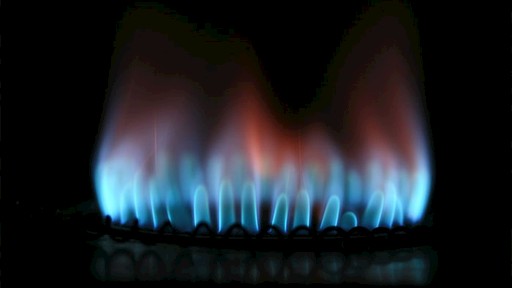The new "photosynthesis" turns CO2 into CH4
Researchers have long been trying to mimic photosynthesis, using the sun's energy to produce chemical fuels. Now, a team of researchers is closer than ever to that goal by developing a new copper - and iron-based catalyst that uses light to convert carbon dioxide into methane, the main component of natural gas. If further refined, the new catalyst could help reduce reliance on fossil fuels.
The new research is an "exciting step forward". "The benefit of producing methane is that the infrastructure for storing, distributing and using this fuel already exists widely," said Edward Sargent, a chemist and solar fuel expert at the University of Toronto in Canada, who was not involved in the study.
In the United States, methane recently surpassed coal as the primary fuel for electricity generation. When methane burns, it breaks down into carbon dioxide and water, releasing heat that is used to generate electricity. Using sunlight to produce methane is the opposite, starting with carbon dioxide and water, and adding electricity to recast the methane's chemical bonds.
However, making this transition will not be easy. Eight electrons and four protons must be added to a carbon dioxide molecule to form a methane molecule. Every electron and proton added requires energy to drive the transformation. Metal catalysts can help facilitate these reactions by holding on to each reaction molecule "partner", making the reaction more likely to occur and reducing energy consumption.
CH4 is the main component of natural gas used for heating and power generation
A few years ago, scientists discovered that when combined with light-absorbing materials, copper particles showed initial potential for converting carbon dioxide into more energy-rich compounds, but the efficiency and speed were still low. So researchers have tried to combine copper with other metals. They placed two kinds of metal particles in tiny, hair-like nanowires designed like tiny solar cells to absorb sunlight and convert it into electricity, providing electrons for the catalyst's reaction.
In 2016, researchers reported that catalysts containing copper and gold in silicon nanowires helped convert carbon dioxide into carbon monoxide.
In March 2019, electrical engineer Zetian Mi and colleagues at the University of Michigan, Ann Arbor, USA, discovered that a ruthenium - and zirconium-based catalyst effectively converts carbon dioxide into formates, an industrially useful compound, in light-absorbing gallium nitrite (GaN) nanowire arrays. But none of these efforts has produced a widely available fuel.
Now Mi and his colleagues have found a way around this problem. They started with GaN nanowires grown on commercial silicon wafers. Then, using a standard technique called electrodeposition, they added 5-10 nanometer-wide particles made of a mixture of copper and iron. In the presence of carbon dioxide and water, the device converts 51 percent of the energy in light into methane, and it does so quickly.
Other researchers have previously achieved higher efficiency in producing solar methane, but at rates too slow to be practical. The new catalyst, reported in this month's issue of the Proceedings of the National Academy of Sciences, is the most efficient and productive light-driven catalyst ever used to convert carbon dioxide into methane. Computer simulations show that two metals in the catalyst bind to the carbon dioxide molecule, causing it to bend, making it more likely to react and absorb electrons. "It lowers the energy barrier for critical steps." Mi said.
Compared with many other light absorbents and catalysts, all the components of this method are cheap and abundant, and are already used in industry. The next step, Sargent notes, is to increase the efficiency and speed of methane production, which is needed to make the current system viable. Once realized, the new method could provide a way to make fuel from sunlight.






 Facebook
Facebook YouTube
YouTube LinkedIn
LinkedIn Twitter
Twitter